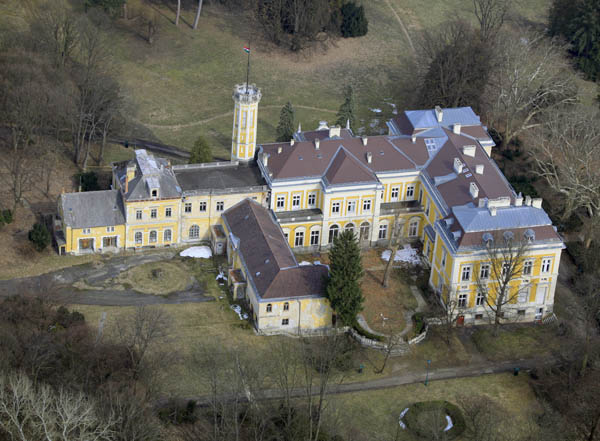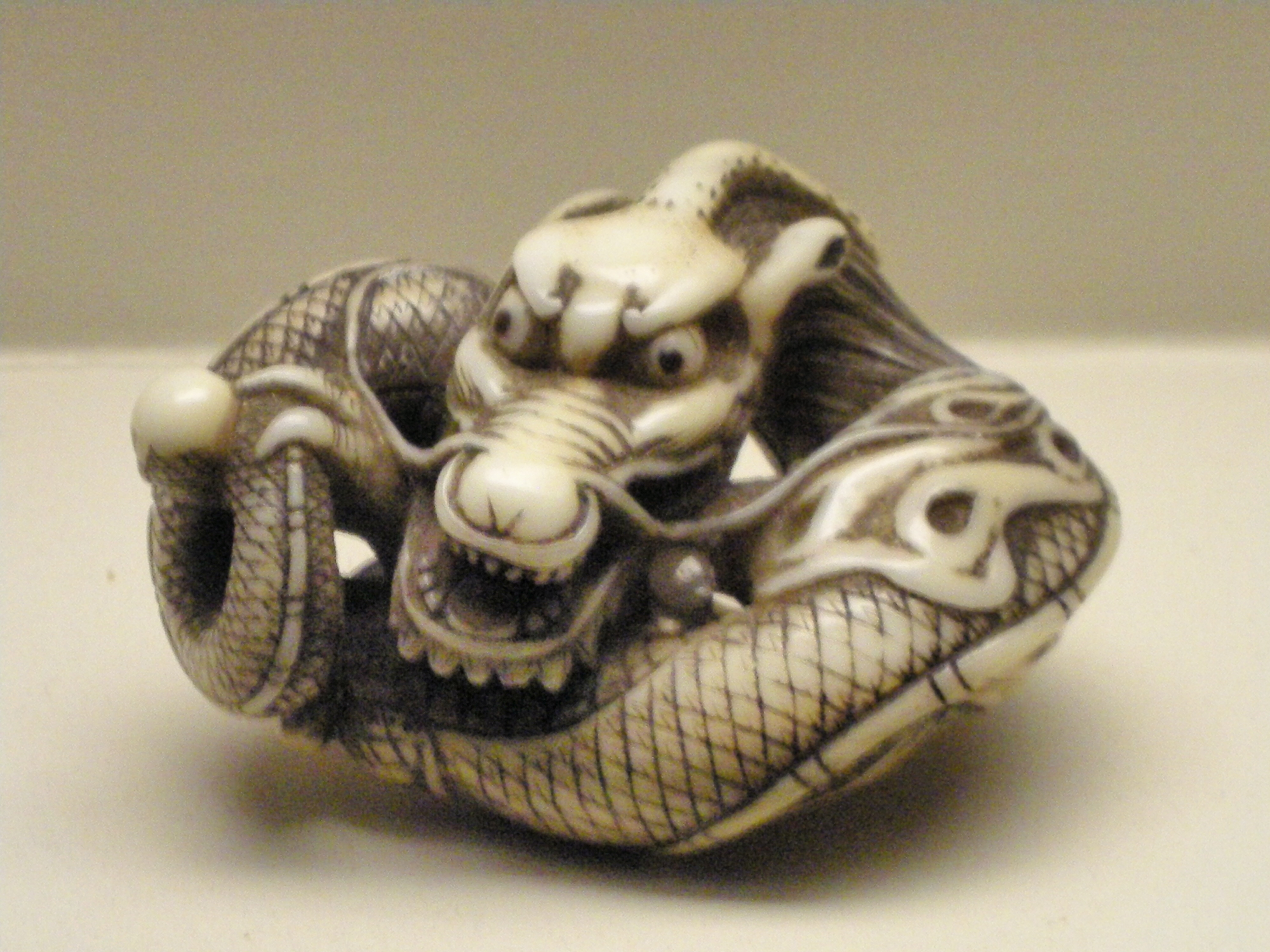|
Károlyi Castle (Füzérradvány)
Károlyi Castle is a 19th-century castle located in Füzérradvány, Sátoraljaújhely District, Borsod-Abaúj-Zemplén County, Hungary. The castle was built by Péter Réthey at the end of the 16th century. The castle and estate were given to László Károlyi by Leopold I, Holy Roman Emperor, Leopold I in 1686. The Károlyi Castle, which dates back to the 16th century, was rebuilt in a Romanticism, romantic-Eclecticism, eclectic style based on the plans of Miklós Ybl between 1860 and 1870, while its interior is in the Italian Renaissance style. History In 1614, the Füzérradvány estate was owned by Pál Nádasdy, but by 1620 it had passed to Péter Réthey. In a 1626 will, his widow bequeathed the Füzérradvány manor, built in the style of a castle, to their daughter, Zsófia Réthey, and her husband, Imre Mosdóssy, further obligating her to finish the construction of the Füzérradvány church. Zsófia Réthey, who lived in the castle with Ferenc Jékei Buly at the time. ... [...More Info...] [...Related Items...] OR: [Wikipedia] [Google] [Baidu] |
Füzérradvány
Füzérradvány is a village in Borsod-Abaúj-Zemplén county, Hungary Hungary is a landlocked country in Central Europe. Spanning much of the Pannonian Basin, Carpathian Basin, it is bordered by Slovakia to the north, Ukraine to the northeast, Romania to the east and southeast, Serbia to the south, Croatia and .... Image:Füzérradvány - Palace.jpg, Füzérradvány, Károlyi-kastély Image:CivertanlegifotoFuzerradvany1.jpg Image:CivertanlegifotoFuzerradvany2.jpg Image:CivertanlegifotoFuzerradvany3.jpg References External links Street map Populated places in Borsod-Abaúj-Zemplén County {{Borsod-geo-stub ... [...More Info...] [...Related Items...] OR: [Wikipedia] [Google] [Baidu] |
Ferenc Károlyi
Count Ferenc Károlyi de Nagykároly (20 June 1705 – 14 August 1758), was a Hungarian nobleman and soldier. Early life Károlyi was born on 20 June 1705 at his family's castle in Olcsva in the Kingdom of Hungary (1526–1867), Kingdom of Hungary. He was the only surviving son of Count Sándor Károlyi, Sándor Károlyi de Nagykároly (1669–1743) and Countess Krisztina Barkóczy de Szalai (1671–1724). His elder brother, László, had been appointed by King Leopold I, Holy Roman Emperor, Leopold I of Hungary at the age of 13 as the hereditary governor of Szatmár County in the event of his father's resignation or death, but predeceased their father in 1710. His sister, Countess Klára Károlyi de Nagykároly, was the wife of Count Gábor Haller de Hallerkeõ. His father was a general of Francis II Rákóczi during the Rákóczi's War of Independence, War of Independence and later negotiated the Treaty of Szatmár, which guaranteed autonomy to the Hungarian nobles. His father b ... [...More Info...] [...Related Items...] OR: [Wikipedia] [Google] [Baidu] |
Castles In Hungary
This list of castles in Hungary article consists mostly of the well-known castles on the territory of today's Hungary. List of castles See also *Palaces and mansions in Hungary *List of castles in Europe External linksHomepage of castles in Hungary and in the ancient Hungarian Kingdom {{Castles in Hungary Castles in Hungary, Lists of buildings and structures in Hungary, Castles Lists of castles in Europe, Hungary Lists of castles by country, Hungary Lists of tourist attractions in Hungary, Casltes ... [...More Info...] [...Related Items...] OR: [Wikipedia] [Google] [Baidu] |
Sanatorium
A sanatorium (from Latin '' sānāre'' 'to heal'), also sanitarium or sanitorium, is a historic name for a specialised hospital for the treatment of specific diseases, related ailments, and convalescence. Sanatoriums are often in a healthy climate, usually in the countryside. The idea of healing was an important reason for the historical wave of establishments of sanatoria, especially at the end of the 20th and early 21th centuries. One sought, for instance, the healing of consumptives especially tuberculosis (before the discovery of antibiotics) or alcoholism, but also of more obscure addictions and longings of hysteria, masturbation, fatigue and emotional exhaustion. Facility operators were often charitable associations, such as the Order of St. John and the newly founded social welfare insurance companies. Sanatoriums should not be confused with the Russian sanatoriums from the time of the Soviet Union, which were a type of sanatorium resort residence for workers ... [...More Info...] [...Related Items...] OR: [Wikipedia] [Google] [Baidu] |
György Lehoczky
György () is a Hungarian version of the name ''George''. Some notable people with this given name: * György Alexits (1899–1978), Hungarian mathematician * György Almásy (1867–1933), Hungarian asiologist, traveler, zoologist and ethnographer, father of László Almásy * György Apponyi (1808–1899), Hungarian politician * György Gordon Bajnai (born 1968), Prime Minister of Hungary (2009-10) * György Bálint (originally surname Braun; 1919–2020), Hungarian horticulturist, Candidate of Agricultural Sciences, journalist, author, and politician who served as an MP. * György Bárdy (1921–2013), Hungarian film and television actor * György Békésy (1899–1972), Hungarian biophysicist, awarded the Nobel Prize in Physiology or Medicine * György Bessenyei (1747–1811), Hungarian playwright and poet * György Bródy (1908–1967), Hungarian water polo goalkeeper, 2x Olympic champion * György Bulányi (1919–2010), Hungarian a Piarist priest, teacher, and leader ... [...More Info...] [...Related Items...] OR: [Wikipedia] [Google] [Baidu] |
Objects D'art
In art history, the French term objet d'art (; ) describes an ornamental work of art, and the term objets d’art describes a range of works of art, usually small and three-dimensional, made of high-quality materials, and a finely-rendered finish that emphasises the aesthetics of the artefact. Artists create and produce ''objets d’art'' in the fields of the decorative arts and metalwork, porcelain and vitreous enamel; figurines, plaquettes, and engraved gems; ivory carvings and semi-precious hardstone carvings; tapestries, antiques, and antiquities; and books with fine bookbinding. The National Maritime Museum, Greenwich, London, describes their accumulated artworks as a: "collection of ''objets d’art'' hichcomprises over 800 objects. These are mostly small, decorative art items that fall outside the scope of the Museum’s ceramic, plate, textiles and glass collections." The artwork collection also includes metal curtain ties, a lacquered ''papier-maché'' tray, tobacco boxes ... [...More Info...] [...Related Items...] OR: [Wikipedia] [Google] [Baidu] |
Paris
Paris () is the Capital city, capital and List of communes in France with over 20,000 inhabitants, largest city of France. With an estimated population of 2,048,472 residents in January 2025 in an area of more than , Paris is the List of cities in the European Union by population within city limits, fourth-most populous city in the European Union and the List of cities proper by population density, 30th most densely populated city in the world in 2022. Since the 17th century, Paris has been one of the world's major centres of finance, diplomacy, commerce, culture, Fashion capital, fashion, and gastronomy. Because of its leading role in the French art, arts and Science and technology in France, sciences and its early adoption of extensive street lighting, Paris became known as the City of Light in the 19th century. The City of Paris is the centre of the Île-de-France region, or Paris Region, with an official estimated population of 12,271,794 inhabitants in January 2023, or ... [...More Info...] [...Related Items...] OR: [Wikipedia] [Google] [Baidu] |
Stefano Bardini
Stefano Bardini (1836–1922) was an Italian connoisseur and art dealer in Florence who specialized in Italian paintings, Renaissance sculpture, '' cassoni'' and other Renaissance and Cinquecento furnishings and architectural fragments that came on the market during the urban regeneration of Florence in the 1860s and 70s. Trained as a painter and expert copyist at the Accademia di Belle Arti Firenze from 1854, Bardini received increasing commissions as a restorer and expanded into selling works of art from 1870 onwards. Working as a restorer Bardini, who successfully removed some Botticelli frescoes from the Villa Lemmi, was commissioned to remove the frescoes commissioned by Jakob Salomon Bartholdy from several of the German Nazarene circle of painters from Casa Bartholdy, Rome, which had been purchased by Berlin, in 1886–87. His esthetic, barely distinguishable restoration of Simone Martini's ''Saint Catherine of Alexandria'', now in the National Gallery of Canada, has been ... [...More Info...] [...Related Items...] OR: [Wikipedia] [Google] [Baidu] |
Florence
Florence ( ; ) is the capital city of the Italy, Italian region of Tuscany. It is also the most populated city in Tuscany, with 362,353 inhabitants, and 989,460 in Metropolitan City of Florence, its metropolitan province as of 2025. Florence was a centre of Middle Ages, medieval European trade and finance and one of the wealthiest cities of that era. It is considered by many academics to have been the birthplace of the Renaissance, becoming a major artistic, cultural, commercial, political, economic and financial center. During this time, Florence rose to a position of enormous influence in Italy, Europe, and beyond. Its turbulent political history includes periods of rule by the powerful House of Medici, Medici family and numerous religious and republican revolutions. From 1865 to 1871 the city served as the capital of the Kingdom of Italy. The Florentine dialect forms the base of Italian language, standard Italian and it became the language of culture throughout Italy due to ... [...More Info...] [...Related Items...] OR: [Wikipedia] [Google] [Baidu] |
Apponyi Family
The House of Apponyi, also known as Apponyi de Nagy-Appony, was a prominent and powerful Hungarian family of the high Upper nobility (Kingdom of Hungary), upper nobility of the Kingdom of Hungary, whose members remained notable even after the kingdom's Treaty of Trianon, dismemberment in the successor states of Kingdom of Hungary (1920–1946), Hungary and First Czechoslovak Republic, Czechoslovakia. History While tracing its origins to the High Middle Ages, the family became prominent in the 18th century with its elevation to the rank of Counts of Nagy-Appony in 1739 and the acquisition of seventeen grand domains between 1760 and 1800. In the last century of the Habsburg monarchy, four of its members List of Knights of the Golden Fleece, received the Order of the Golden Fleece, a total held in a draw among the European nobility by the houses of Esterházy, Batthyány, and Pálffy ab Erdöd, Pálffy (4 each). In addition, Albert Apponyi received the Order in 1921 shortly after ... [...More Info...] [...Related Items...] OR: [Wikipedia] [Google] [Baidu] |
Albert Pio
Albert may refer to: Companies * Albert Computers, Inc., a computer manufacturer in the 1980s * Albert Czech Republic, a supermarket chain in the Czech Republic * Albert Heijn, a supermarket chain in the Netherlands * Albert Market, a street market in The Gambia * Albert Music, an Australian music company now known as Alberts ** Albert Productions, a record label * Albert (organisation), an environmental organisation concerning film and television productions Entertainment * ''Albert'' (1985 film), a Czechoslovak film directed by František Vláčil * ''Albert'' (2015 film), a film by Karsten Kiilerich * ''Albert'' (2016 film), an American TV movie * ''Albert'' (album), by Ed Hall, 1988 * "Albert" (short story), by Leo Tolstoy * Albert (comics), a character in Marvel Comics * Albert (''Discworld''), a character in Terry Pratchett's ''Discworld'' series * Albert, a character in Dario Argento's 1977 film ''Suspiria'' People * Albert (given name) * Albert (surname) * Prince Alb ... [...More Info...] [...Related Items...] OR: [Wikipedia] [Google] [Baidu] |
István Péchy
István () is a Hungarian language equivalent of the name Stephen or Stefan. It may refer to: People with the given name Nobles, palatines and judges royal * Stephen I of Hungary (c. 975–1038), last grand prince of the Hungarians and first king of Hungary * Stephen Rozgonyi (died after 1440), ''ispán'' (Count) of Temes County * Stephen III Báthory (died 1444), Palatine of Hungary * Stephen V Báthory (1430–1493), Hungarian commander, judge royal and Voivode of Transylvania * Stephen VIII Báthory (1477–1534), Voivode of Transylvania * Stephen VII Báthory (1480–1530), Count of Temesvár and Palatine of Hungary * Stephen Báthory (1533–1586), Voivode of Transylvania, Prince of Transylvania, King of Poland and Grand Duke of Lithuania * Stephen Báthory (1555–1605), judge royal of the Kingdom of Hungary * Stephen Bocskai (1557–1606), Prince of Transylvania and Hungary * Stephen Bethlen (1582–1648), Prince of Transylvania Politicians * István Balogh (politician ... [...More Info...] [...Related Items...] OR: [Wikipedia] [Google] [Baidu] |





